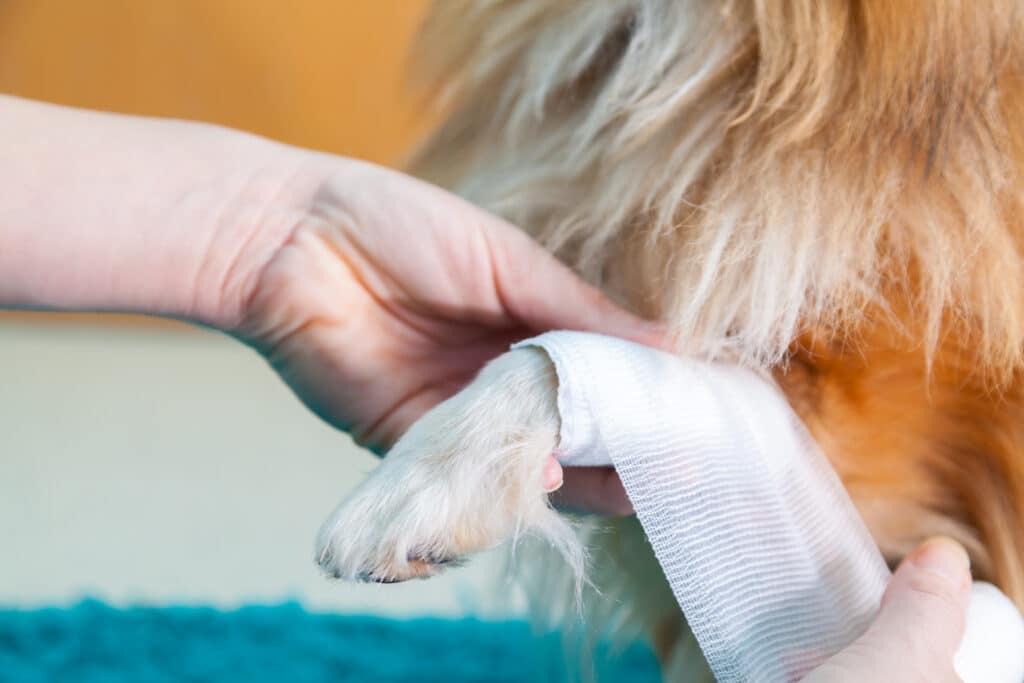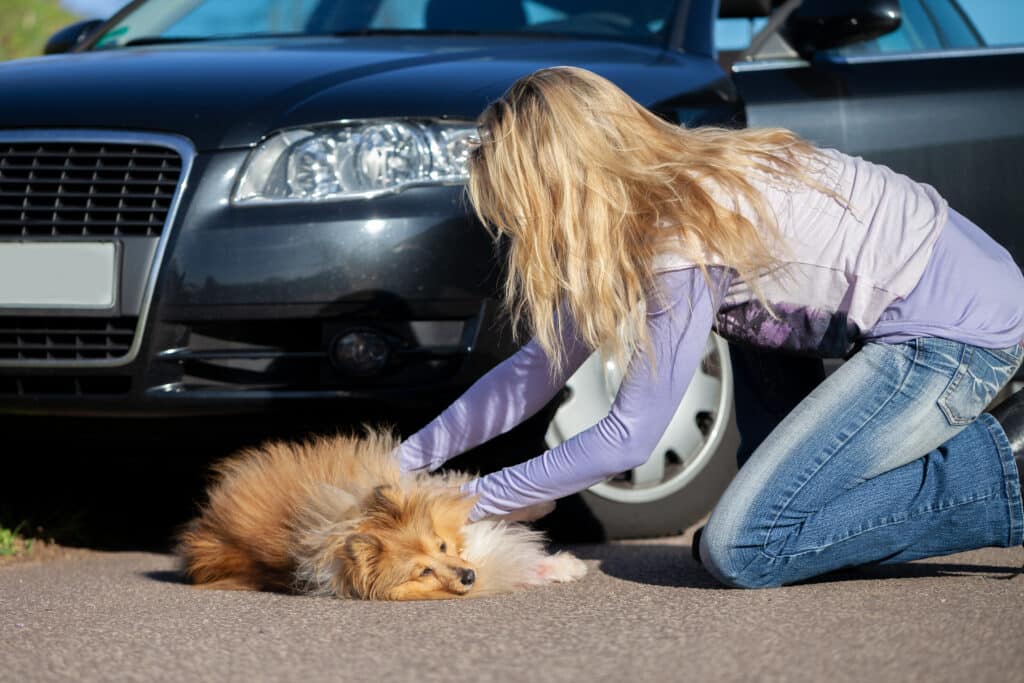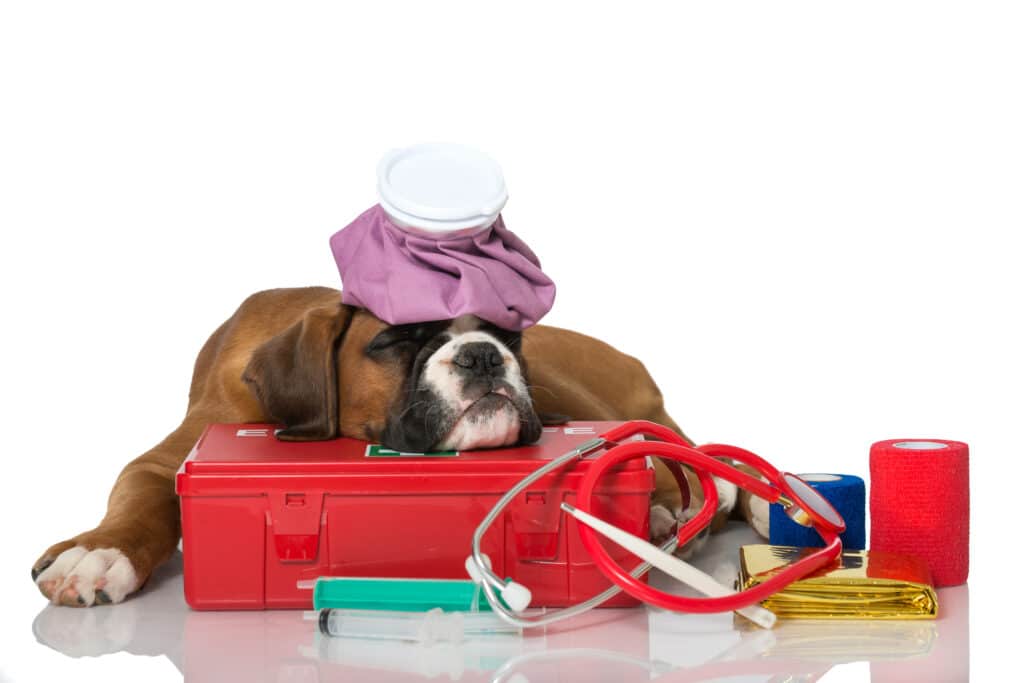Medical emergencies can come in all forms — and unexpectedly. So, you’ll find that being prepared for these situations can help you save a life more confidently.
And as a dog parent, knowing basic dog first aid could prove useful in an event where your pooch gets into an accident or suddenly falls ill.


While this is not substitute for veterinary care, dog first aid can play a big part in your pooch’s survival until they make it to the vet to receive proper care.
Learn how to handle an emergency situation and help save your dog’s life with these first aid tips.
What Is First Aid?
First aid is the short-term treatment that is administered immediately after a medical emergency at the location where it occurred.
It is important to note that first aid is, in no way, substitute for veterinary care in dogs. Its purpose is to reduce pain, minimize injury, and in more serious cases, keep the victims alive before appropriate care can be administered.
Recognizing An Emergency Situation


An important part of dog first aid is recognizing an emergency situation. So, here are emergency situations that you should watch out for:
- Difficulty breathing
- Bleeding that won’t stop
- Loss of consciousness/Unresponsive
- Seizure
- Difficulty moving
- Broken bones
- Vomiting
- Diarrhea for more than 24 hours
- Sudden change in appetite
- Ingestion of toxic food or substances
In the event of any of these emergency situations, it is important to call the vet or, better yet, bring your dog to the vet as soon as possible.
Things To Do In An Event Of An Emergency


Now that you’ve successfully identified an emergency situation, what next? Here are things you should do during the medical emergency:
- Stay Calm: Being calm is key. This will help you effectively assess the situation and provide dog first aid.
- Evaluate The Situation: Assess the situation you and your dog are currently in. Are you at home? Are you in a highway with oncoming traffic? Check that you and your dog are out of harm’s way, so you can safely and successfully administer dog first aid.
- Assess Your Dog’s Condition: Check your dog’s responsiveness, vital signs, their temperature, heart and breathing rate, and even their gum color. If you think your dog’s condition is severe, rushing them straight to an emergency veterinarian (after assessing their condition) is the best course of action.
- Contact The Vet: Whether or not the condition is severe, immediately call your dog’s vet after securing your pooch and assessing their condition. It is important that you tell the vet all of your assessment, this way they can suggest additional first aid and prepare for your dog’s arrival.
- Administer First Aid: Administer first aid based on your assessment of your dog’s situation. You can cool down your dog if they are experiencing a heat stroke, or do the Heimlich maneuver if your dog is choking. Furthermore, here’s how you can appropriately administer dog first aid after assessing their Airway, Breathing and Circulation (ABC):
- Airway: Make sure your dog’s airway is clear of any obstruction. Gently open their mouth and check for anything that may obstruct their breathing.
- Breathing: Once you’ve confirmed that nothing is blocking your dog’s airway, look, listen, and feel for your dog’s breathing. If they’re not breathing, perform Cardiopulmonary resuscitation (CPR).
- Circulation: Check for a pulse and assess for any severe bleeding, from your dog’s head to toe. Elevate the injured area and apply direct pressure to any wounds to stop the bleeding.
- Get To The Vet As Soon As Possible.
What To Include In Your Dog’s First Aid Kit


You can always buy a pre-made kit at a local pet store, but if you’d like to be more specific with yours, here are items we’d recommend to put on your dog first aid kit:
Documentation
- A list of emergency contact information (phone number and address) of your regular vet, emergency vet, animal control, and pet poison hotline.
- Your dog’s medical and vaccination records.
The Basics
- Sterile gauze pads or gauze rolls
- Elastic bandages
- Self-adhesive bandage
- Cotton balls
- Heat or cool packs – for hypothermic or overheating dogs
- Pet thermometer
- Ear wash/cleaner
- Saline eye wash
- Tongue depressors
- Styptic powder – to stop bleeding
- Hydrogen peroxide – for cleaning wounds and for inducing vomiting in case of poisoning (3% solution)
- Medical-grade saline solution
- Bandage scissors
- Clean cloths or towels
- Disposable gloves
Things Specific To Your Dog
- Your dog’s medication (if they’re currently taking medication, keeping a small supply in your first aid kit will help).
- An E-collar, leash, and identification tags.
- A basket muzzle to keep them and the people administering first aid safe.
- A carrier or a large blanket, depending on your dog’s size, to help safely transport them.
Basic Dog First Aid Procedures You Should Know
Every medical emergency is unique different, but having an understanding and learning basic dog first aid procedures can help save your dog’s life. Here are basic and general guidelines for

